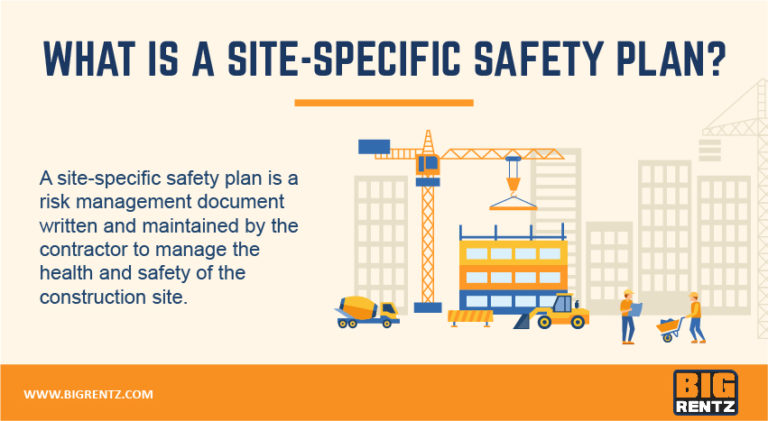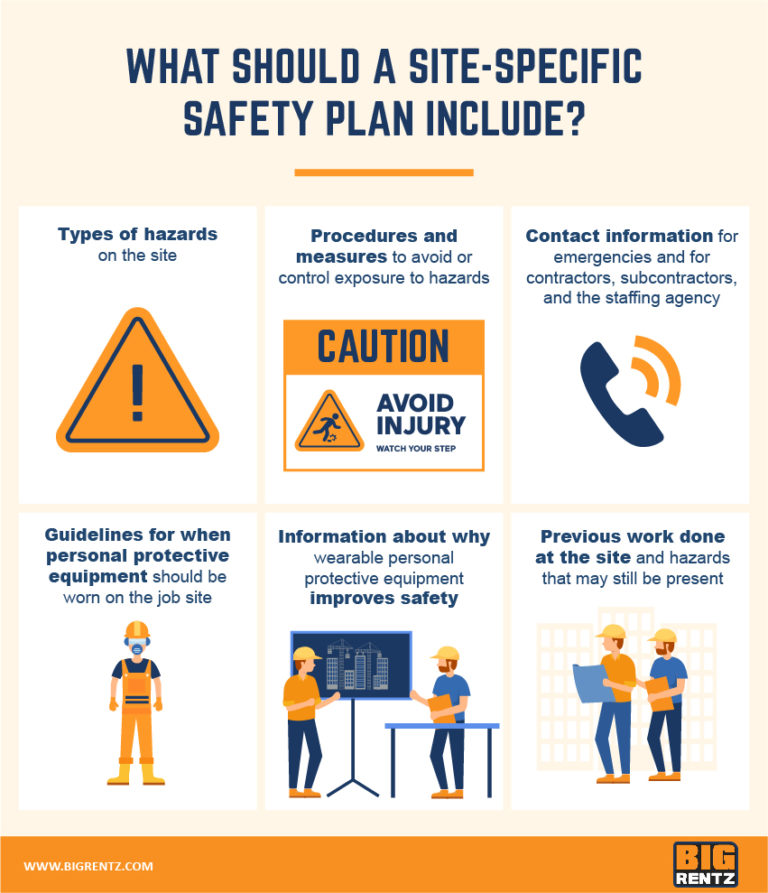Help your construction industry work comp clients create a site-specific safety plan
- The construction industry is among the top industries for worksite injuries and fatalities.
- General contractors and construction managers can alleviate many of the risks by creating a site-specific safety plan.
- Learn what to include in your safety plan: types of hazards and their safety steps for mitigation.
Unless your work comp client is new to the construction industry, they’re well aware of worksite risks and typical injuries. You can help them create a site-specific safety plan to increase awareness of risks and help prevent worksite injuries.
Why is this so important to share with your clients? Let’s review a few statistics:
- 150,000 injuries occur on construction job sites every year. (U.S. Bureau of Labor Statistics)
- 20 percent of deaths among U.S. workers occur in construction. (OSHA)
- 1,008 construction workers died on the job in 2020. (BLS)
- Falls are the leading cause of injury for construction workers and account for 34 percent of all construction deaths. Eliminating falls in construction would save more than 300 lives every year. (BLS)
Related: Tools & tips to prevent construction fall hazards
Accidents are all too common on construction job sites. Multiple hazards exist – many unknown. Then you add to the mix all the contractors and subcontractors new to the site and unfamiliar with the hazards. And the construction landscape and accompanying hazards change daily. Creating and enforcing a site-specific safety plan with all contractors and subs can provide a cohesive safety strategy, minimizing the potential for accidents.
Worksite injuries not only cost your client in work comp claims, but they can also delay or shut down a project, creating cost overruns, missed deadlines and rushed jobs that lead to more unsafe conditions. As a result, companies can be vulnerable to lawsuits and civil penalties, not to mention damage to their reputations. OSHA civil penalties can amount to as much as $13,653 per violation, says BigRentz.
Obviously, the goal of your site-specific safety plan is to minimize accidents (ideally to zero) and increase safety at a construction site. BigRentz explains that because each job site is structured differently, with different projects, objectives and construction equipment, it’s important to have a specific plan for each location: a site-specific safety plan. This safety plan is a risk management document written and maintained by the construction manager or general contractor to manage the health and safety of the construction site and those working there.
Related: How to reduce on-the-job injuries
A site-specific safety plan, defined
Designed to maintain a safe environment, the plan takes into account a workplace’s unique risks, the workers, visitors and other people on-site and the project’s objectives.
The plan should be not only detailed but also flexible enough to adjust to changing conditions through different phases of a project. View BigRentz’s infographic definition below.

Your clients should complete the plans before work starts; update the plans regularly as conditions change on the site. The plan should include a step-by-step analysis of each subcontractor’s responsibilities, starting from when material is unloaded until the project is complete, says BigRentz. It’s important to identify a competent person to be responsible for the site-specific safety plan, plus a backup contact in case that person is unavailable.
Plans should cover all contractors and subcontractors at the site. Proof that subcontractors are adequately trained should be provided; then, put systems in place to ensure each complies with the general contractor’s safety policies. Add a disciplinary policy to address situations when safety procedures aren’t followed.
OSHA says an effective construction safety plan should ensure that general contractors and their employees are aware of:
- The types of hazards that may be associated with work being done on the site
- Procedures and measures needed to avoid or control exposure to hazards
- How to contact the contractor, subcontractor, or staffing agency with safety concerns or to report an injury or illness
- Previous work done at the site and hazards that may already be present
The plan should include guidelines for when and where personal protective equipment (PPE) — such as hard hats, respiratory protection, hearing protection, gloves, chemical splash goggles and face shields — should be worn on the job site.
Related: Beyond face masks: Workplace PPE (Personal Protective Equipment)
The goal should be zero accidents. Substantial reductions in accident frequency will result when safety programs and safety requirements are adopted on a project site.
Identify workplace hazards
The first step in creating the safety plan is to recognize any hazards such as:
- Hazards that can lead to tripping, slipping, or falling
- Equipment failure
- Operator failure of heavy equipment such as forklifts, cranes, etc.
- Fire hazards, through the careful storage of flammable material
- Chemical exposure through touch or fumes
- Poor air quality
- Improperly stacked or handled material that’s likely to fall
- Excessive noise that could damage hearing
- Lack of cleanliness
- Electrical hazards
As much as possible, identify these hazards on a site map where they’re most likely to occur, due to an issue such as blind spots or trenching. View BigRentz’s infographic with suggestions on your site-specific safety plan below.

What to include in a site-specific safety plan
BigRentz suggests the following be included in every site-specific safety plan:
- Project name and location
- Description and visual diagram of the project
- List and description of site conditions and exposures
- Routes of travel and delivery to and within the site
- Building entries and stairwells
- Presence and location of any hazardous materials (such as asbestos) and protocols for dealing with such materials
- Safety standards and location of any potential hot work on the job site
- Hazard communication and response plan in case of accident
- Material safety data sheet (MSDS) for any chemicals or other potentially hazardous materials, and their locations on-site
- First aid protocols and where to get first aid
- Clearly defined roles and responsibilities for each employee and subcontractor
- Contact information for safety representatives and emergency contacts
- List of construction site safety rules, such as designated smoking areas or restrictions on operating certain equipment in defined areas
Your client’s plan should also establish procedures to implement in bad weather. For instance, high winds can send materials flying, thus injuring workers. Include in the plan how materials and equipment are to be secured in foul weather. Also include protocols for when to delay work in case of lightning storms, high wind or severe cold temperatures.
Related: Top summer safety hazards for outdoor workers
BigRentz warns general contractors and construction managers not to simply adopt a standard template as-is, without modifying the plan to fit this site’s particular nuances. In order to be successful, the site-specific safety plan must include specific site-related details and hazards. Once the plan is finalized, hold safety meetings and safety orientations prior to the beginning of work to familiarize everyone involved in the project with the scope of work ahead, along with safety measures.
Check each employee’s OSHA certification to ensure they’re qualified to operate the equipment they’ll be using, and provide additional safety training wherever necessary.
Maintain clear and frequent communication between contractors, subcontractors, project managers, construction workers and safety representatives throughout the process.
Share this article with your workers’ comp clients involved in construction, so that they can create an effective site-specific safety plan to help them avoid accidents that could lead to injury or even death, while saving money and ensuring deadlines are met safely.
Agents, take a look at our Workers’ Compensation Program to add to your portfolio of insurance solutions.

![You are currently viewing How to create a construction site-specific safety plan [Infographic]](https://www.arrowheadgrp.com/wp-content/uploads/2022/01/AH-1.25-safety-BLOG.png)